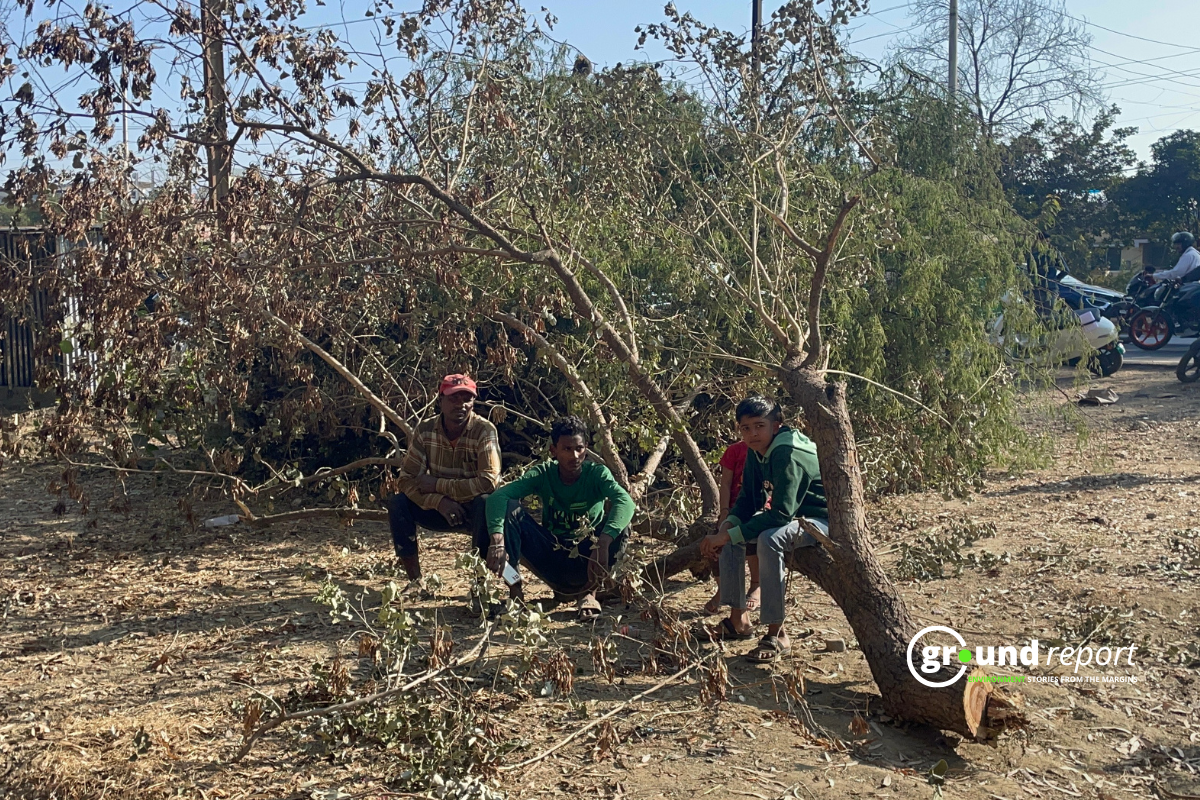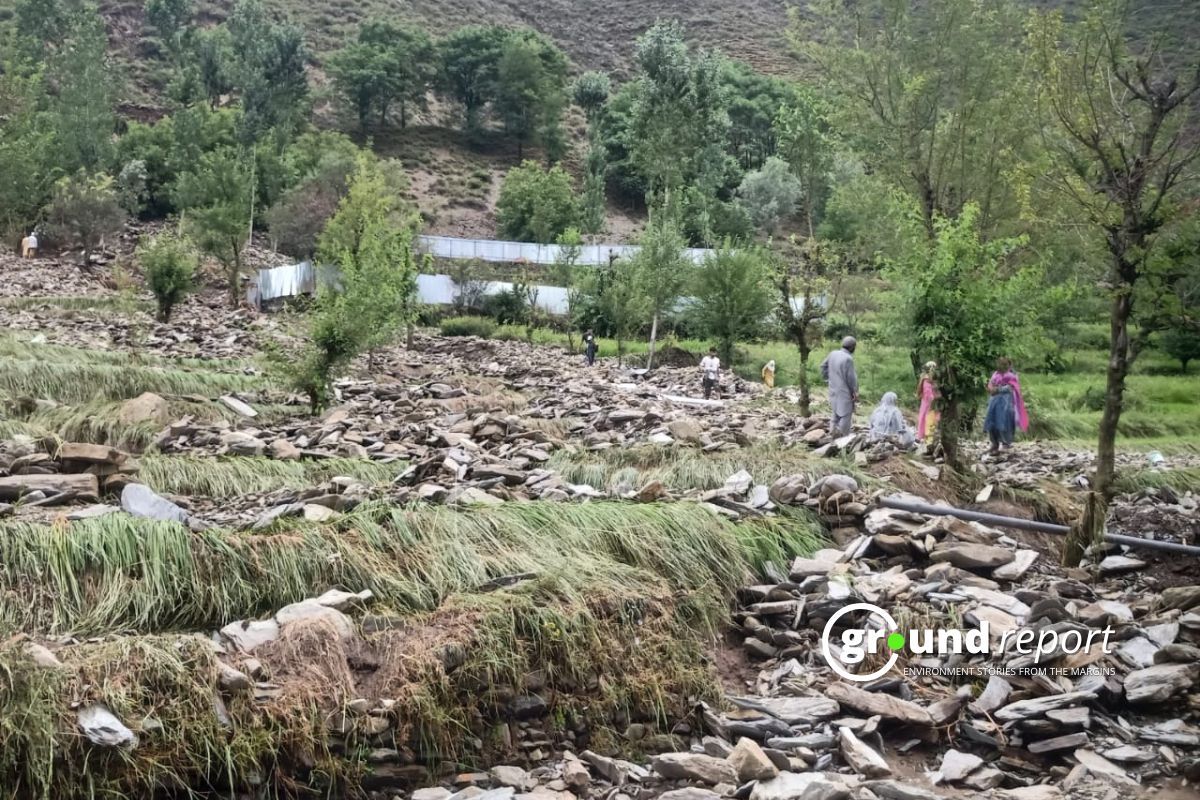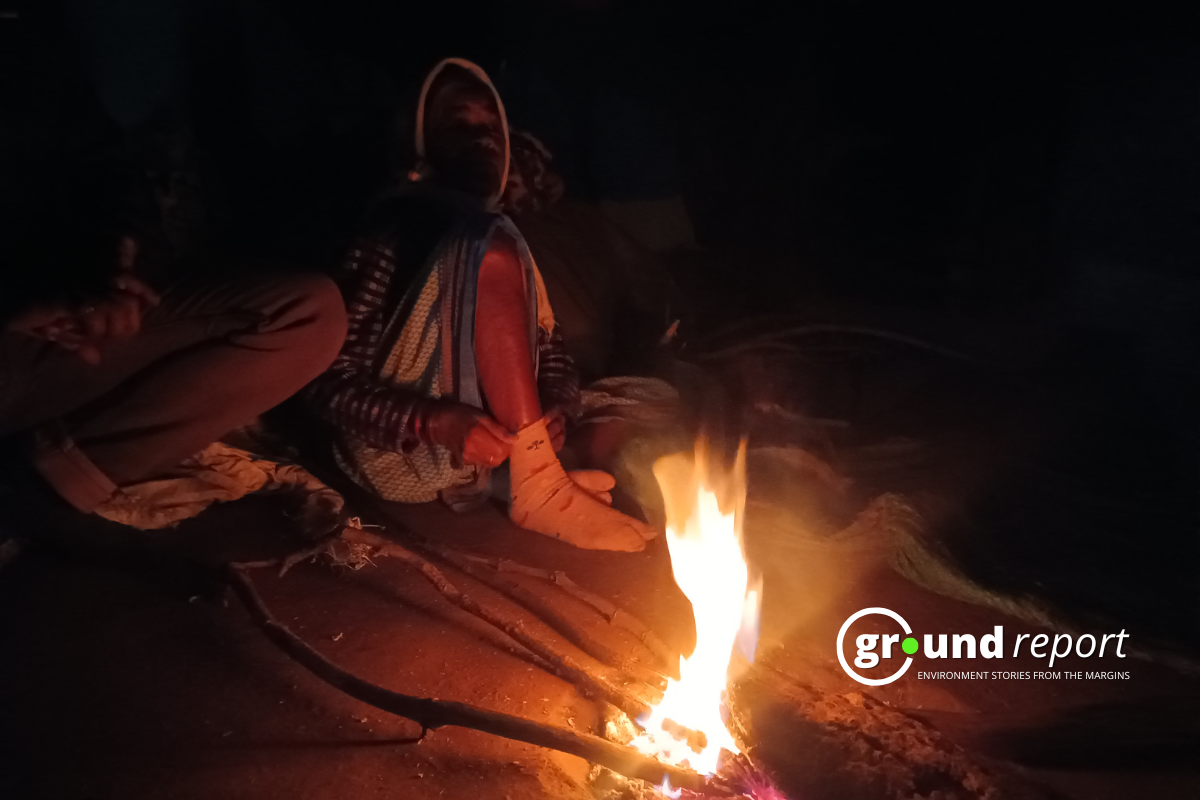Muzaffarpur, Bihar | 15 minutes away from the Kanti Thermal Power Plant, in Muzaffarpur, Bihar, Bal Bahadur Prasad Kushwaha opens the door of a single-window shed behind his house. Inside, on the floor, are neat three to four rows of polyethylene bags stuffed with straw. Some of these bags have snow-white oyster mushrooms spilling from slits.
Within two decades in this century, mushroom production in India is led by Bihar, with more than 41,000 tons in 2023-24. At the centre of this ‘revolution’ is Dr. Dayaram. He has spurred mushroom farming in Bihar, and Kushwaha has contributed too. Kushwaha, who began experimenting with mushrooms after a 2012 training course at Dr. Rajendra Prasad Central Agricultural University (PUCA), Samastipur, under mycologist Dr. Dayaram. He was one of just a dozen trainees.
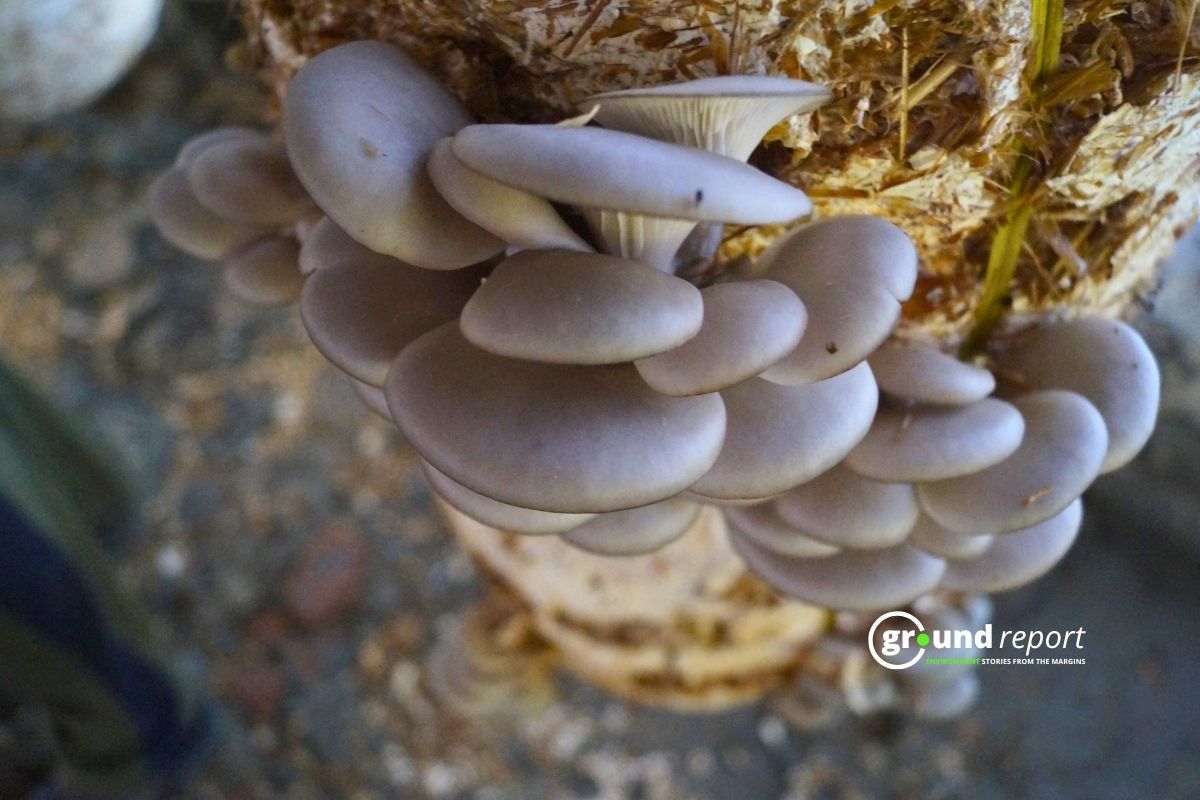
Post 2012, after the training, apart from building his own mushroom farming set-up, he started teaching other farmers too. He recalls, “But slowly, slowly, people from Siwan, Gopalganj—even farther—started calling.” Today he charges ₹1,000 plus bus fare to run hands-on workshops for newcomers, because, he says, “doing it for free every day doesn’t feed my family.”
But this story is about mushroom farmers in Muzaffarpur’s Kanti village. For decades, Muzaffarpur—India’s Lychee Capital—was a point of pride. But fly ash drifting from Kanti’s coal-fired power plant settles on the district’s orchards like grey snowfall. “The fruit that used to fetch ₹40,000–35,000 a garden isn’t even getting ₹10,000 now,” says Ram Pravesh Pandey, a smallholder farmer. The ash, he explains, clings to the delicate mojar—the flower panicle—stunting it before fruit can set. “Without pesticide sprays and several heavy washings, the buds just burn off.”
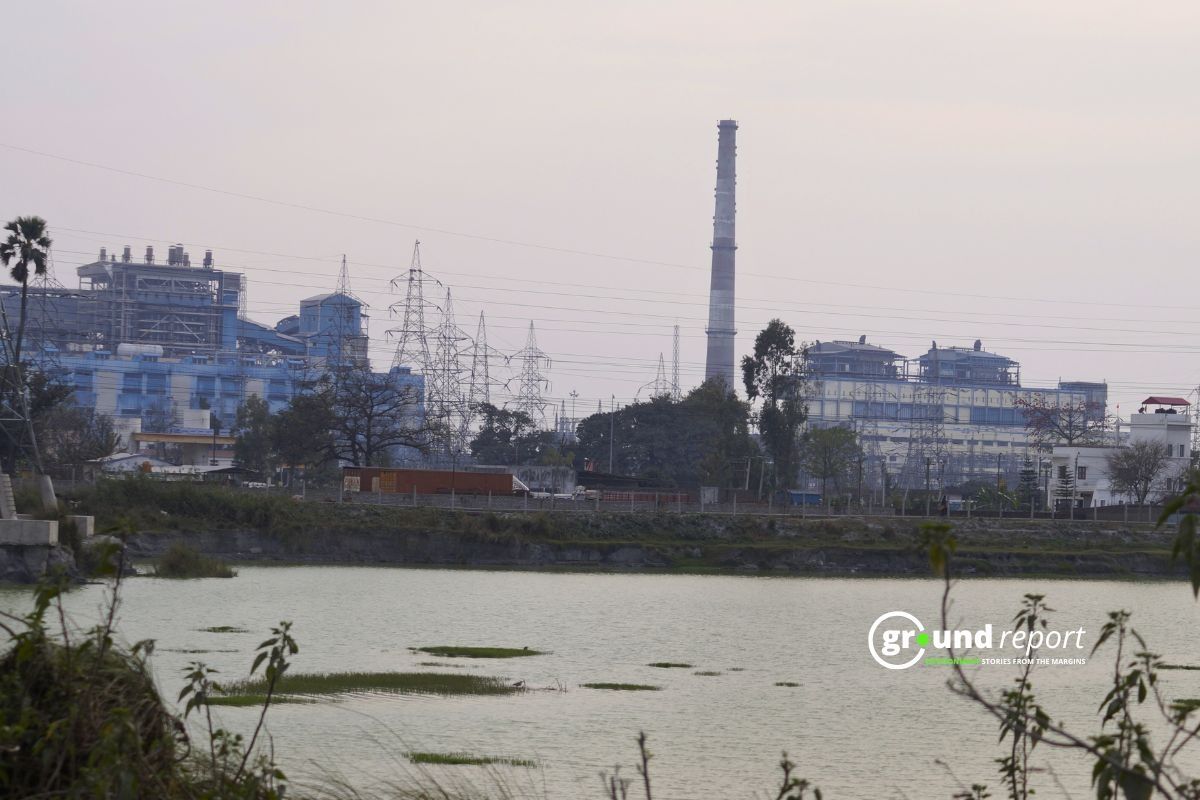
Those extra washings require groundwater pumped by diesel generators at ₹200–220 an hour. This investment doesn’t break the farmers’ backs, but it definitely reduces their profit margins due to the change in the quality of lychees. With no compensation, road upgrades, or health services from the plant, Pandey says, “All we get is disturbance.”
We delve into the impact of fly ash on the lychee farms and the lives in Kanti in a separate article.
Kushwaha’s ‘Trick’
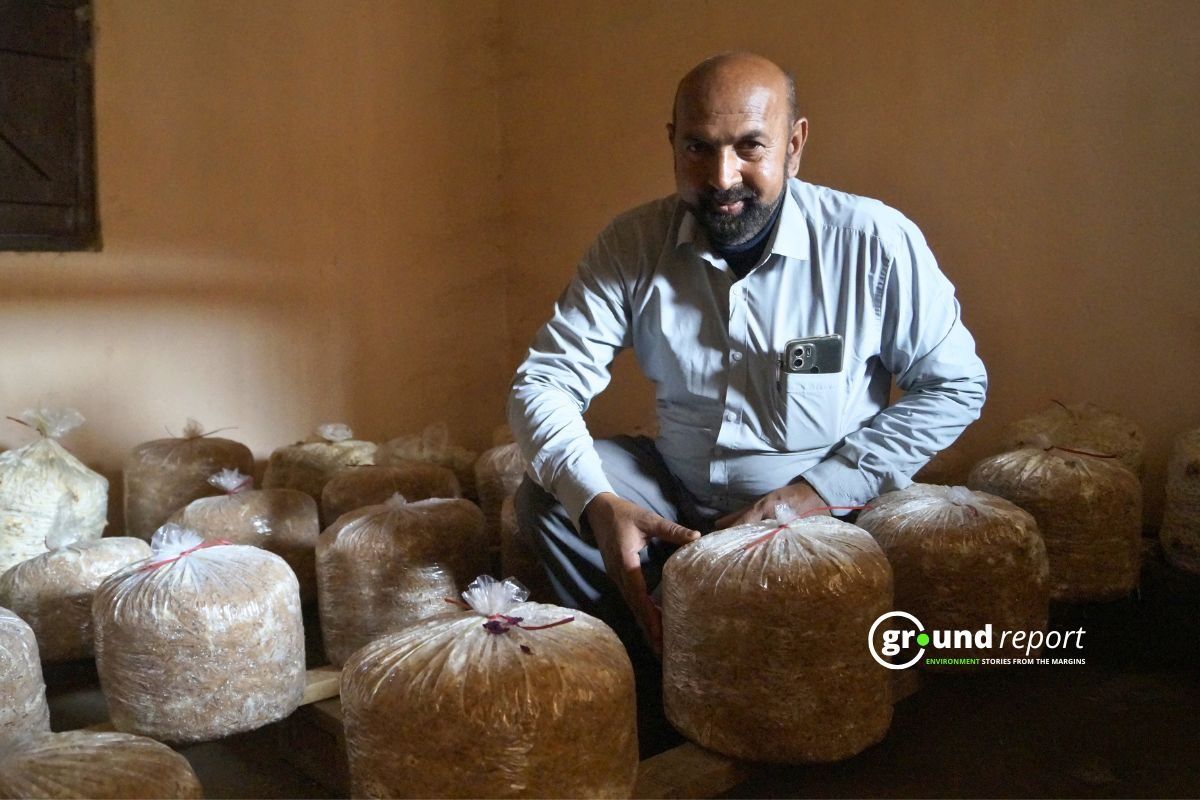
The variety Kushwaha favours is the grey oyster (Pleurotus ostreatus), known locally as dingri. Unlike other mushrooms, oysters thrive between 20°C and 32°C, which Kushwaha insists on maintaining. He has a simple rule: if you can sleep in a room that’s the ideal temperature, you can’t sleep in a warm environment. He added that the room requires two things: darkness and still air. The moisture can’t come into the room.
He initially started mushroom farming with the traditional method of boiling straw. Now he disinfects the straw with slaked lime and household bleaching powder—both cheap and locally available. He called it the ‘trick.’
After soaking, the straw is drained, mixed with spawn (mushroom seed grain), and packed into 10-kg bags. Ten days later he slices windows into each bag; within another week, small mushrooms emerge. In summer, first harvests arrive in 22–25 days; in winter, they take about a month.
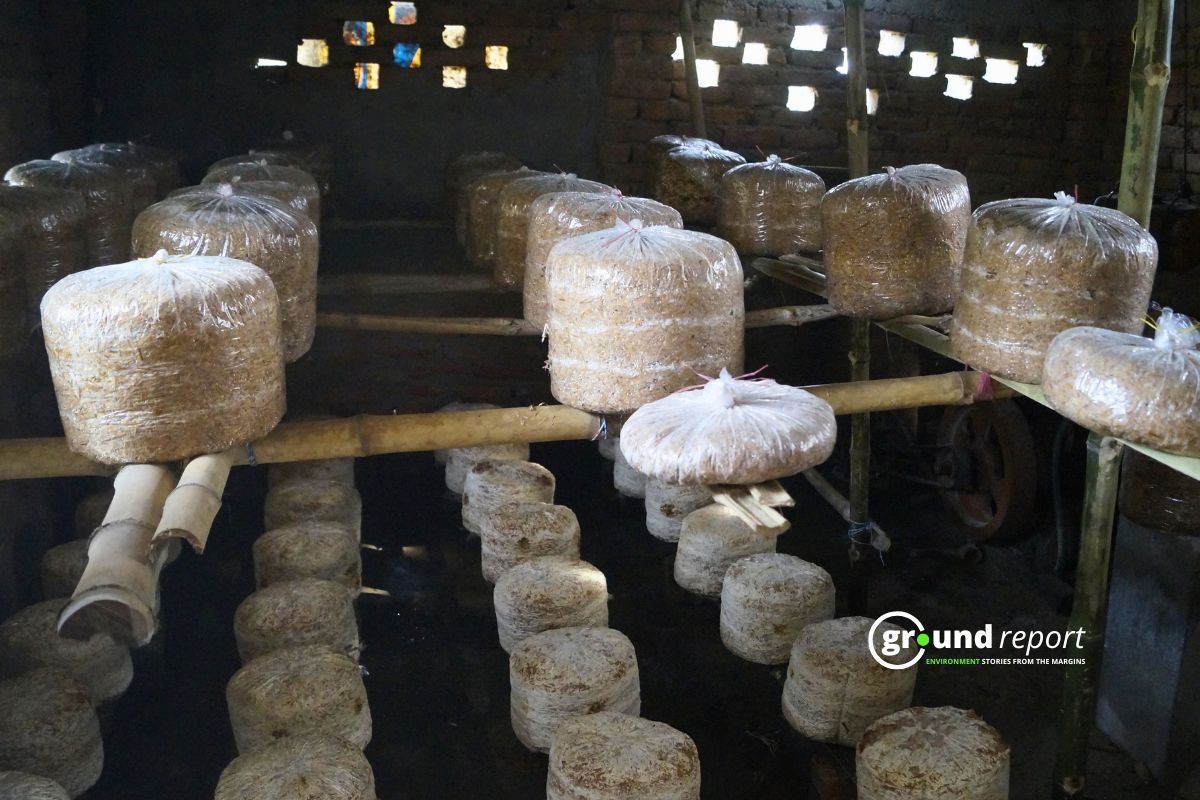
He grows wheat and other crops as well. His wife takes care of two cows, which they also own. With the stubble residue of his wheat crops, he fed the cows. And some of this residue is used to grow mushrooms.
Kushwaha has come from the very bottom. He didn’t have enough to spend on his children’s education or health emergencies. To a small house, he has added three additional rooms and a shed. Now he calls his home a ‘Taj Mahal,’ a representation of great beauty and grandeur. In some sense, it is the representation of his hardship.
“A farmer can begin with just one kilo of seeds—₹250—and household straw,” Kushwaha says. “Within a month that ₹250 turns into about ₹1,000.”
Things have changed for the better. Though, in the beginning, people saw his prosperity with skepticism and disbelief. There is sincerity in his work. So, when he started training other farmers in the village and nearby, they saw change. Their monthly income increased as well. They started believing that mushroom cultivation can bring a sustainable change in their lives.
The steady income has given him the confidence to branch out. He has installed two machines to make incense sticks and plans to reinvest what he earns. “Once these sticks start selling,” he says, “I’ll buy a few more machines—I have plenty of ideas.”
Pandey’s Poultry Farm Turned Mushroom Farm
Sitting in his yellow shirt and traditional Bihari Gamcha—a lightweight and absorbent cotton towel—around his shoulders, Ram Pravesh Pandey was one of Kushwaha’s trainees in 2016. Today he runs a small mushroom farm with 50–200 bags at a time and supports his family.
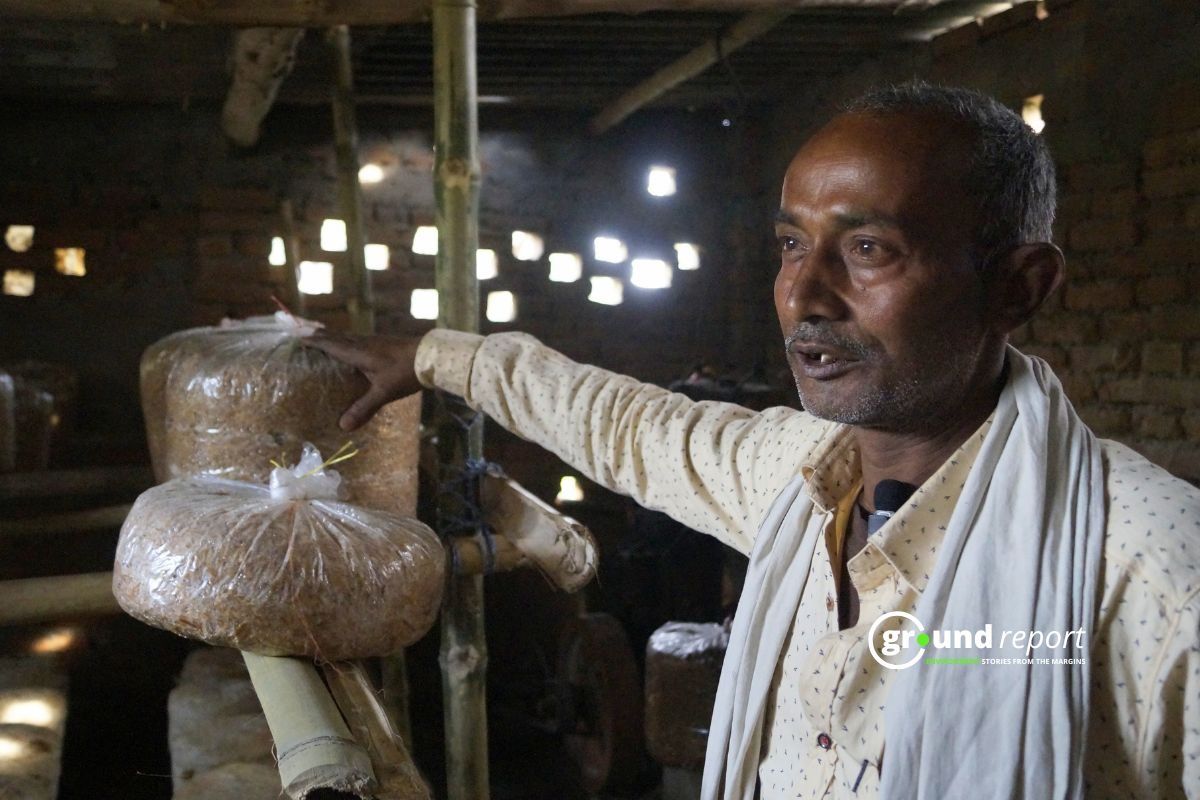
Pandey’s poultry business collapsed during COVID-19. He remembered that he sold his chicken ‘to air,’ i.e., to say at a very minimal price or for almost free. “I gave away 223,000 worth of birds for free,” he said. But even before that, the fly ash had impacted his lychee farms too.
Though unlike Kushwaha, Pandey’s monthly income depends on the regular harvest of mushrooms. Unlike his lychee, mushrooms are more stable, he told us. He invests ₹10,000–15,000 when cash allows. “It doesn’t replace lychee income,” he admits.
Many farmers turn to mushrooms as an additional monthly income, and nowhere is that clearer than in Bihar, the state that now leads India in mushroom production.
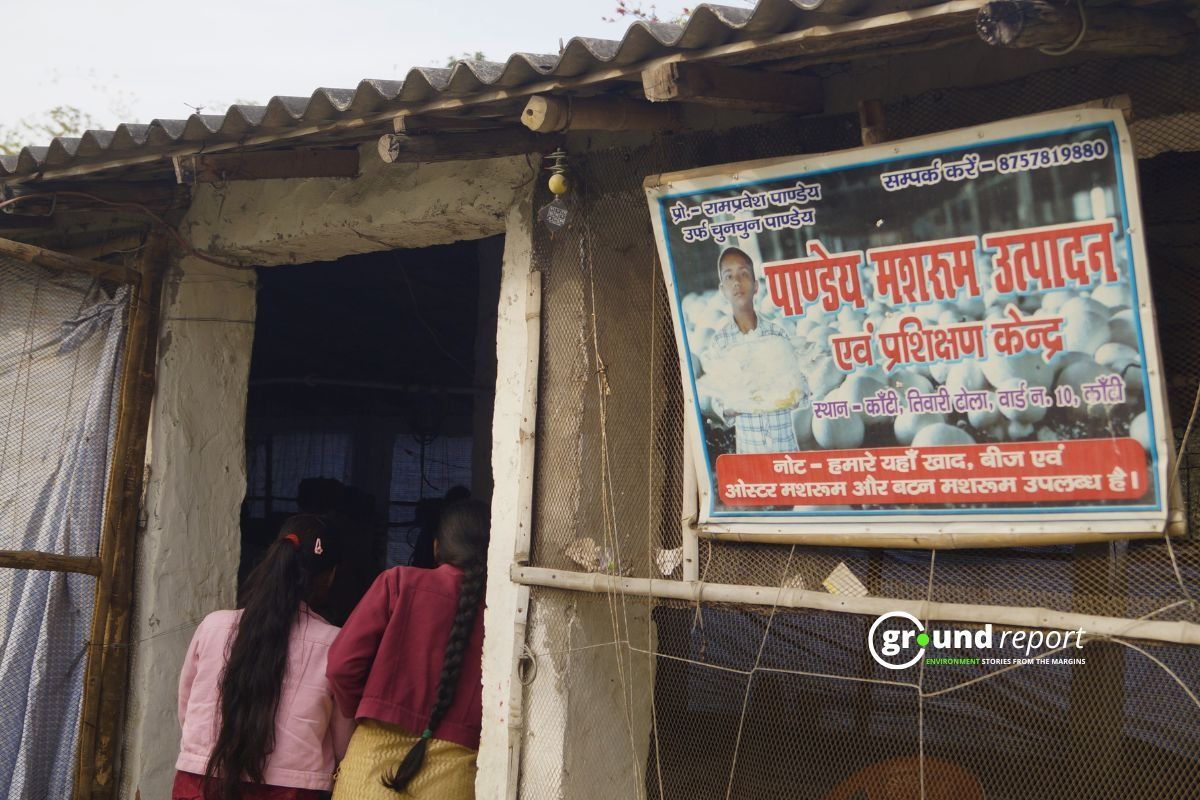
Pandey led us to a shed that once hosted his poultry but now is his mushroom farm. A rectangular-shaped shed made with blue-colour tarpaulin and bamboo contours. The base is stuffed with mud, and there are several hanging mushroom polythene bags. He recalled that when the first dingri was grown and sold to villagers, they dismissed it as gobar chhatta—cow-dung fungus. For two years, it was difficult, he added.
He emphasised that the product is purely vegetarian and organic, and villagers now indeed see mushrooms as equivalent to ‘paneer,’ a luxury food. At the same time, it carries benefits for diabetes, hypertension, and arthritis—health claims often circulated on WhatsApp and YouTube. Today demand outstrips supply: “The fresh crop sells out before we can turn it into pickles or kheer.”
Kushwaha remembers a drive to town; he noticed a roadside stall stacked with fresh mushrooms. “They were button mushrooms… the round ones,” he said. He planned to pick some up on his way home, but when he returned, the stall was empty—and the price had climbed before the last batch was sold. The quick sale confirmed the strong demand, yet it also left him wondering how small growers like himself might cope if larger companies entered the market.
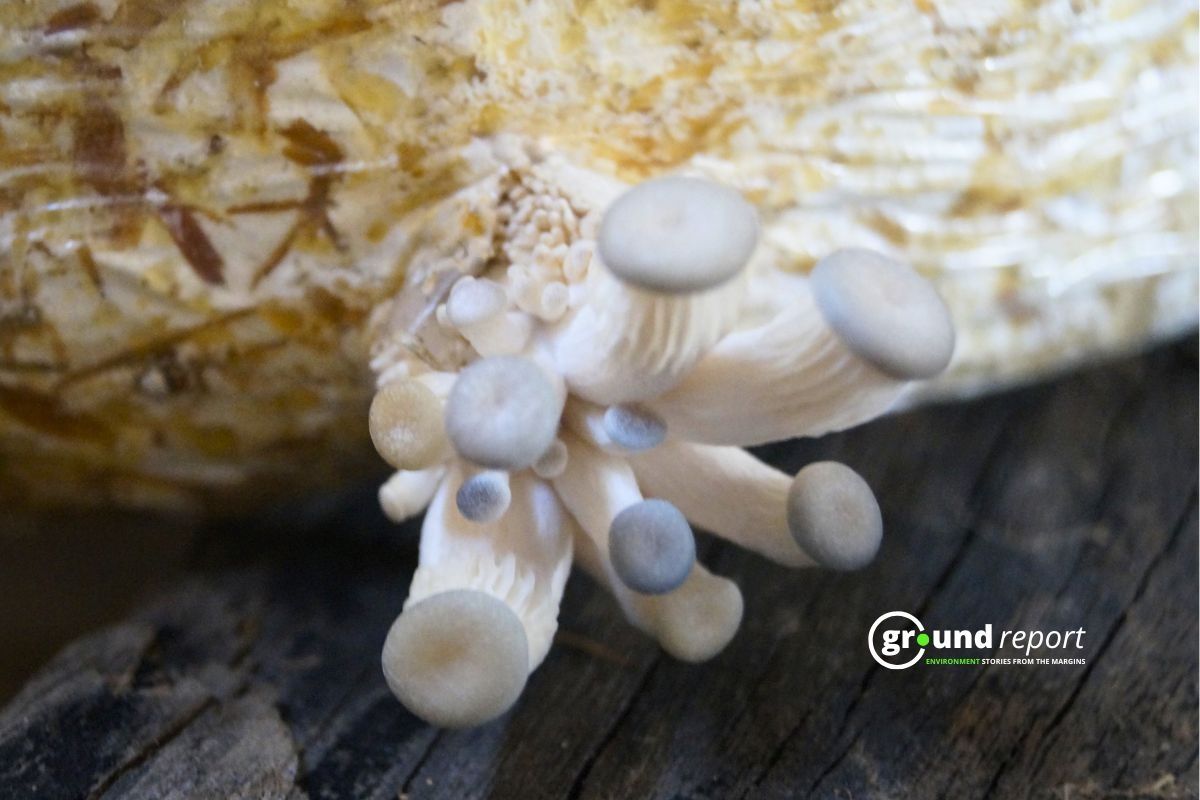
They will still remain a stable monthly income source | Photo Credit: Rajeev Tyagi
Though the outreach has expanded beyond the Kanti block. Requests now come from neighbouring districts and even Jharkhand. While most participants are marginal farmers, a few school leavers and self-help group members see mushrooms as a micro-enterprise requiring little land—critical in a region where average holdings have shrunk below one hectare.
What began as a secure additional income tactic has grown into a 200-member growers’ network. Though, only one aggregator collects from growers and delivers across Muzaffarpur, cutting transport losses and guaranteeing a market. Even if every other farmer starts growing mushrooms, prices will go down to “₹50 kg,” Kushwaha explained. So, mushrooms won’t be a profitable venture but won’t be a loss-making one either. They will still remain a stable monthly income source.
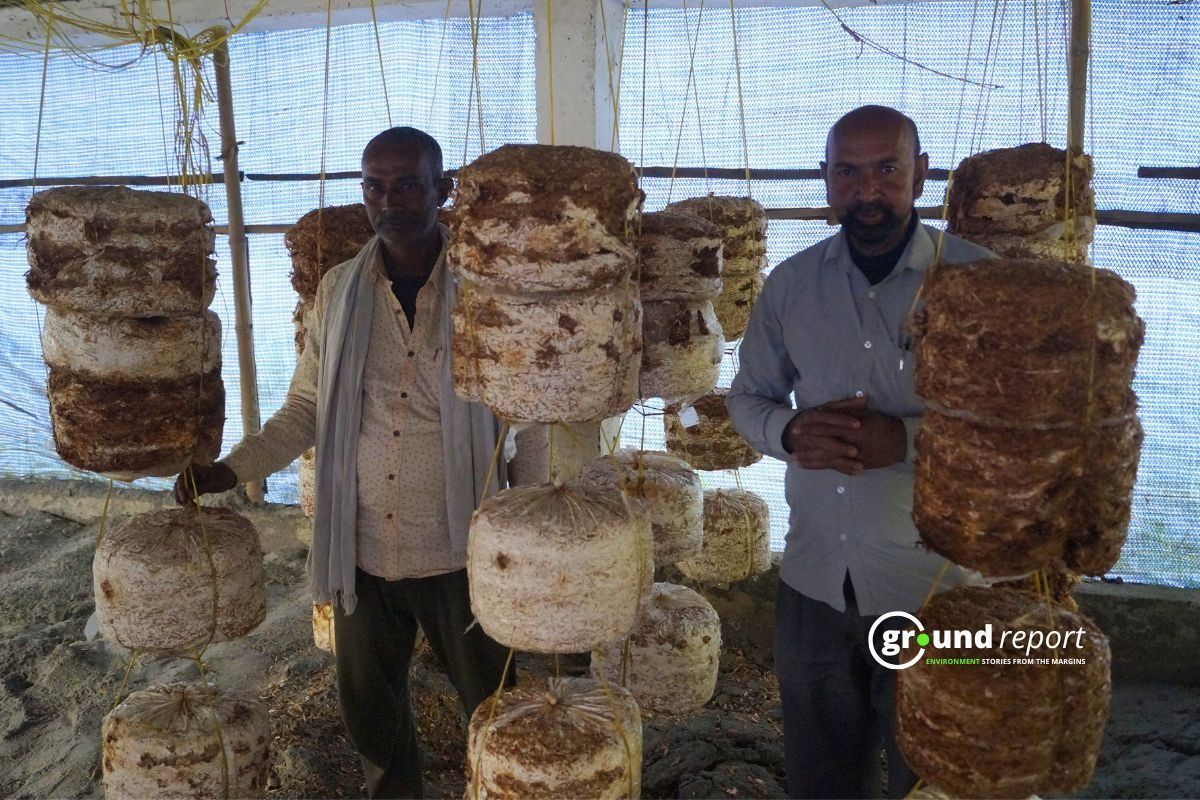
There are several reports on Bihar’s rise in mushroom farming. Agriculture as a source of income often doesn’t lead to economic growth. Particularly in states like Bihar, there are several more hurdles. And, in Kanti, Bihar, the fight is against the mighty thermal power plants byproducts. But there is another hurdle: rising temperatures because of climate change. With rising temperatures, it would be difficult to maintain suitable room temperatures for mushrooms, even for oyster varieties. This would lead to an additional cost for the grower.
Reporting for this article was based entirely on interviews conducted in Muzaffarpur, Bihar. Quotes have been translated from Hindi and lightly edited for clarity.
Support us to keep independent environmental journalism alive in India.
Keep Reading
From failing tomato farm to a thriving strawberry venture
How Climate Change Is Affecting Traditional Farming Practices
Climate crisis hits MP’s maize belt
Faulty fungicide forces farmers to resow crops; PMFBY fails to cover
Stay connected with Ground Report for underreported environmental stories.
Follow us on X, Instagram, and Facebook; share your thoughts at greport2018@gmail.com; subscribe to our weekly newsletter for deep dives from the margins; join our WhatsApp community for real-time updates; and catch our video reports on YouTube.
Your support amplifies voices too often overlooked—thank you for being part of the movement.

